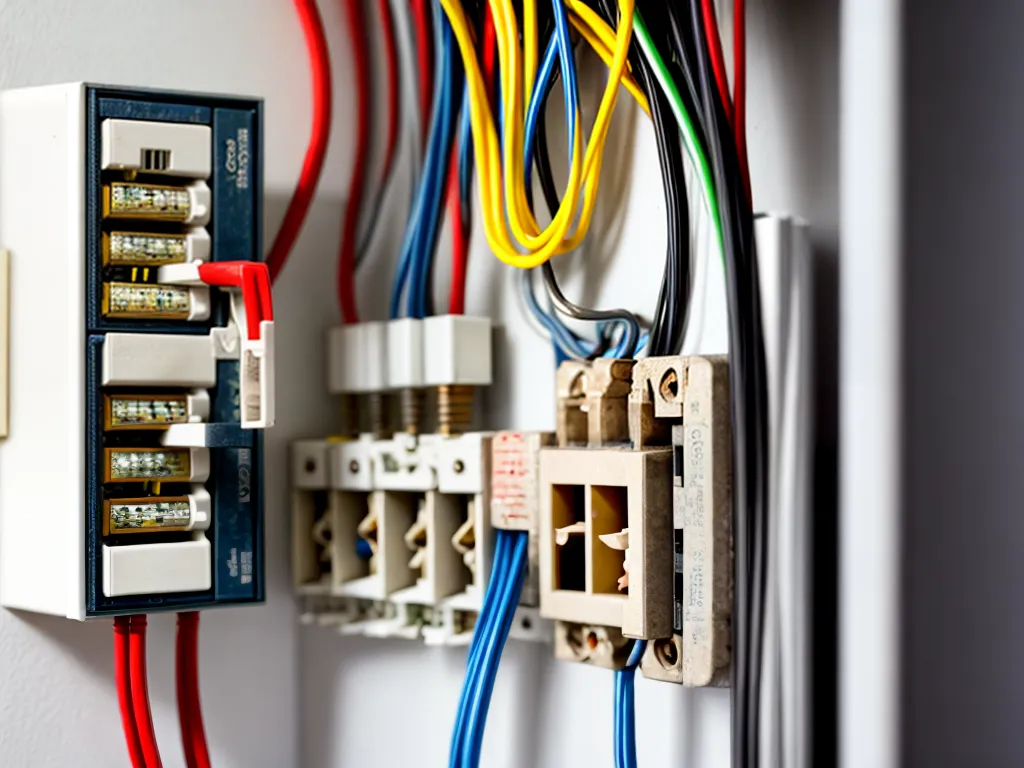
Introduction
Rewiring a home can seem like a daunting task, but with proper planning and safety precautions, it is possible for a homeowner to rewire their house without hiring an electrician. There are several reasons why you may want to rewire your home yourself, such as upgrading to a safer and more modern electrical system, adding circuits, or fixing faulty wiring. Rewiring without professional help does carry risks if not done correctly, so safety should be your top priority. Follow this guide to learn the complete process of rewiring a home safely as a DIY project.
Reasons to Rewire Your Home
Here are some of the main reasons you may want to rewire your house:
Upgrading the Electrical System
If your home still has an old fuse box, rewiring with a modern circuit breaker panel will provide safer and more reliable power. Circuit breakers are far superior to fuses when it comes to preventing electrical fires and handling surges. Upgrading the service will also allow you to meet the needs of more electricity-hungry appliances and devices.
Adding Circuits
Rewiring also allows you to add additional circuits as needed. If your home lacks enough outlets or lighting circuits, or you need dedicated lines for large appliances, new wiring can address these needs. Adding circuits prevents overloading and tripping breakers.
Fixing Faulty Wiring
Old wiring that is deteriorated and faulty poses safety risks like shorts and fires. If you have flickering lights, tripping breakers, discolored outlets, or other issues, rewiring may be necessary to fix the problems.
Dangers of Rewiring Without a Professional
While rewiring a home as a DIY project can save money on electrician fees, safety should be the top concern. Improper rewiring can lead to risks like:
-
Electric shock - Live wires can injure or kill if handled incorrectly. Make sure to shut off power at the main breaker before working.
-
Electrical fires - Faulty connections and overloaded wires can overheat and spark fires. Use the proper gauge wire for circuits.
-
Equipment damage - Mistakes like short circuits can fry appliances and electronics. Follow codes carefully.
-
Legal issues - Most places require permits and inspections for rewiring. Not doing so may violate local regulations.
Consult an electrician if you have any doubts about your ability to rewire your home safely and correctly. The risks often outweigh the potential cost savings of DIY electrical work.
Preparing to Rewire
Thorough preparation is crucial before beginning a rewiring project yourself. Make sure to take these steps:
Research Local Electrical Codes
All electrical work must follow local building codes and regulations. Consult your local permitting office to learn about required inspections and permits for DIY rewiring projects.
Draw Up Plans
Map out your new circuit routes and create a wiring diagram on paper. Plan where your new circuits will run and outlets will go. This helps organize the project.
Purchase Supplies and Tools
Get the necessary supplies before starting, like wire, conduit, boxes, breakers, and outlets. Also obtain basic electrical tools like strippers, cutters, voltmeter, etc.
Turn Off Power and Remove Old Wiring
Shut off power at the main breaker. Then remove existing switches, outlets, and wiring throughout the rewiring project area.
Running New Wiring
Once preparations are complete, you can start running the new wires through the home:
Outline the Box Locations
Map out on the walls and ceilings where your wiring boxes will go using a pencil or markers. Follow your wiring plan.
Drill Entry Holes
Drill holes in walls/floors where wires will enter and exit. Use proper drill bit sizes for different wire gauges. Avoid drilling where plumbing or structure could be damaged.
Fish Wires and Cables
Use fish tape to route cables through walls and ceilings between boxes. Keep proper wire gauge for circuit amperage and voltage drop. Don't overload conduits.
Leave Extra Wire Lengths
When wiring boxes, leave extra wire lengths of at least 6-8 inches for outlet and switch connections. This makes the wire accessible.
Use Safe Connections
Securely connect wires using proper connectors - wire nuts for joining branch wires, crimp connectors for wire-to-device connections.
Label All Wires
To stay organized, use colored tape and permanent marker to label each wire run in junction boxes according to its corresponding circuit.
Installing the New Electrical Panel
With the wires run throughout the house, you can now install the new main service panel:
Choose a Good Location
Pick a spot like a garage wall or basement room for your panel with easy access. Follow any code requirements for clearance space around it.
Mount the Panel Enclosure
Securely mount and level your new breaker panel enclosure to studs before wiring it up. Follow the manufacturer's instructions.
Connect Grounding Wires
Ground the panel properly by attaching a ground wire from the ground bus bar to water pipes and ground rods outside.
Run Wire to the Main Breaker
Feed the main circuit wires from your main feed breaker through conduit into the new panel. Leave extra wire.
Install the Breakers
Connect all the branch circuit wires to their designated circuit breaker terminals. Follow amperage limits for each.
Label All Breakers
Creating labels on the panel that match your circuit wiring makes it easy to locate the right breaker in the future.
Finishing Touches
You're almost done! Finish the project by:
- Installing switches, receptacles, and cover plates
- Affixing conduit and wire insulation
- Capping unused wires safely
- Cleaning up all dust and debris
Testing and Inspections
With everything installed, it's crucial to:
- Double check all connections are tight
- Test each circuit for proper operation
- Fix any open grounds, shorts, etc.
- Request final inspections by the local building department
- Only re-energize the system after passing inspections
By following safety precautions, permits, and codes, you can successfully rewire your home as a DIYer. But don't hesitate to call an electrician if you have any doubts!